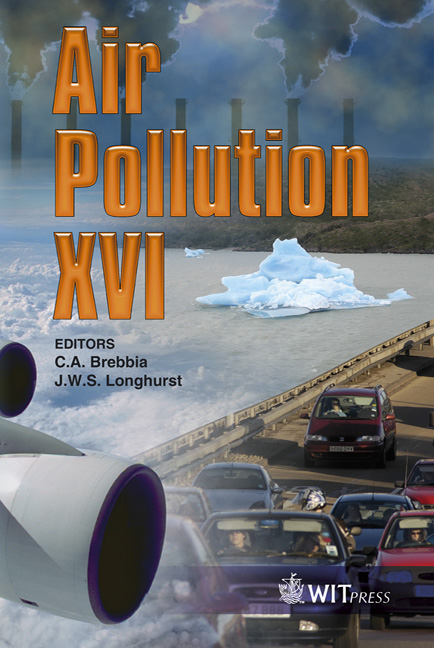The Role Of PM10 In Air Quality And Exposure In Urban Areas
Price
Free (open access)
Transaction
Volume
116
Pages
10
Page Range
511 - 520
Published
2008
Size
663 kb
Paper DOI
10.2495/AIR080521
Copyright
WIT Press
Author(s)
C. Borrego, M. Lopes, J. Valente, O. Tchepel, A. I. Miranda & J. Ferreira
Abstract
In recent years, there has been an increase of scientific studies confirming that long- and short-term exposure to particulate matter pollution leads to adverse health effects. The calculation of human exposure in urban areas is the main objective of the current work combining information on pollutant concentration in different microenvironments and personal time-activity patterns. Two examples of PM10 exposure quantification using population and individual approaches are presented. The results are showing important differences between outdoor and indoor concentrations and stressing the need to include indoor concentrations quantification in the exposure assessment. Keywords: air pollution, respiratory diseases, exposure, particulate matter. 1 Introduction Every day, a person breathing is exposed to different concentrations of atmospheric pollutants, as he moves from and to different outdoor and indoor places. Particulate matter, coarse and fine, is one of the pollutants of most concern in terms of adverse health effects [1]. Epidemiological studies point out tobacco smoke, indoor and outdoor pollutants as preventable risk factors of respiratory diseases such as cancer, allergic diseases, asthma and other chronic respiratory diseases [2]. Smoke from fuels, urban air pollution or occupational airborne particulates contribute to the increase of disability-adjusted life years (DALYs, one DALY represents the loss of one year of full health) either in
Keywords
air pollution, respiratory diseases, exposure, particulate matter.





